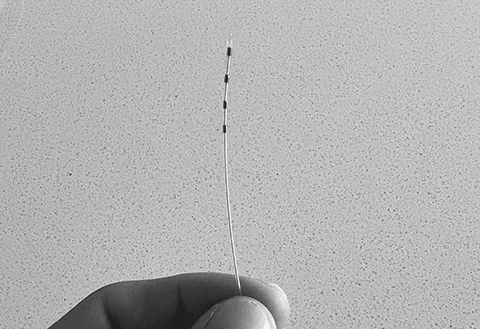Chronic pain can be incredibly challenging to manage, often impacting the quality of life for those affected. However, advancements in medical technology offer new hope for individuals seeking relief. Spinal cord stimulators are cutting-edge solutions that can significantly alleviate chronic pain.
Understanding Spinal Cord Stimulators
Spinal cord stimulators (SCS) are implantable devices that deliver electrical impulses to the spinal cord, altering the perception of pain signals before they reach the brain. Dr. Tolga Suvar explains that SCS systems consist of three main components: a generator, which produces the electrical pulses; leads, which are placed near the spinal cord; and a handheld remote control that allows the patient to adjust the stimulation settings.
How Spinal Cord Stimulators Work
The primary goal of spinal cord stimulation is to interrupt the pain signals traveling along the nerves and replace them with a more pleasant tingling sensation known as paresthesia. This mechanism effectively reduces or eliminates the perception of pain, providing much-needed relief for individuals suffering from chronic pain conditions.
Patient Selection and Evaluation
Dr. Suvar emphasizes the importance of a thorough evaluation process to determine whether a patient is a suitable candidate for spinal cord stimulation. Factors such as the type of pain, its location, duration, and response to previous treatments are taken into account. Additionally, psychological and physical assessments are conducted to ensure the patient’s overall well-being and compatibility with the SCS system.
The Benefits of Spinal Cord Stimulators
- Reduced reliance on medication: Spinal cord stimulators can significantly reduce the need for pain medications, minimizing potential side effects and dependence.
- Customizable pain relief: The stimulation settings of SCS systems can be adjusted to provide personalized pain relief, tailored to each patient’s unique needs and preferences.
- Improved functionality and quality of life: By effectively managing pain, individuals can experience enhanced mobility, improved sleep, and an overall improvement in their daily functioning and quality of life.
- Non-destructive and reversible: Spinal cord stimulators are considered reversible, as they can be deactivated or removed if necessary, giving patients the flexibility to explore other treatment options if needed.
Potential Considerations
While spinal cord stimulators offer significant benefits, Dr. Suvar advises that potential candidates should discuss potential risks and side effects with their healthcare provider. Some considerations include the possibility of infection, device malfunction, discomfort, or allergic reactions. However, the overall safety and efficacy of these devices have been well-established, making them a valuable option for chronic pain management.
Spinal cord stimulators have revolutionized the way we approach chronic pain management, offering hope and relief to countless individuals. Thanks to the expertise of pain specialist Dr. Tolga Suvar, we have gained valuable insights into the capabilities and benefits of spinal cord stimulators. If you or a loved one is struggling with chronic pain, it is essential to consult with a qualified healthcare professional who can guide you through the evaluation process and help determine if spinal cord stimulation is the right path towards regaining control over your life and experiencing lasting pain relief.


